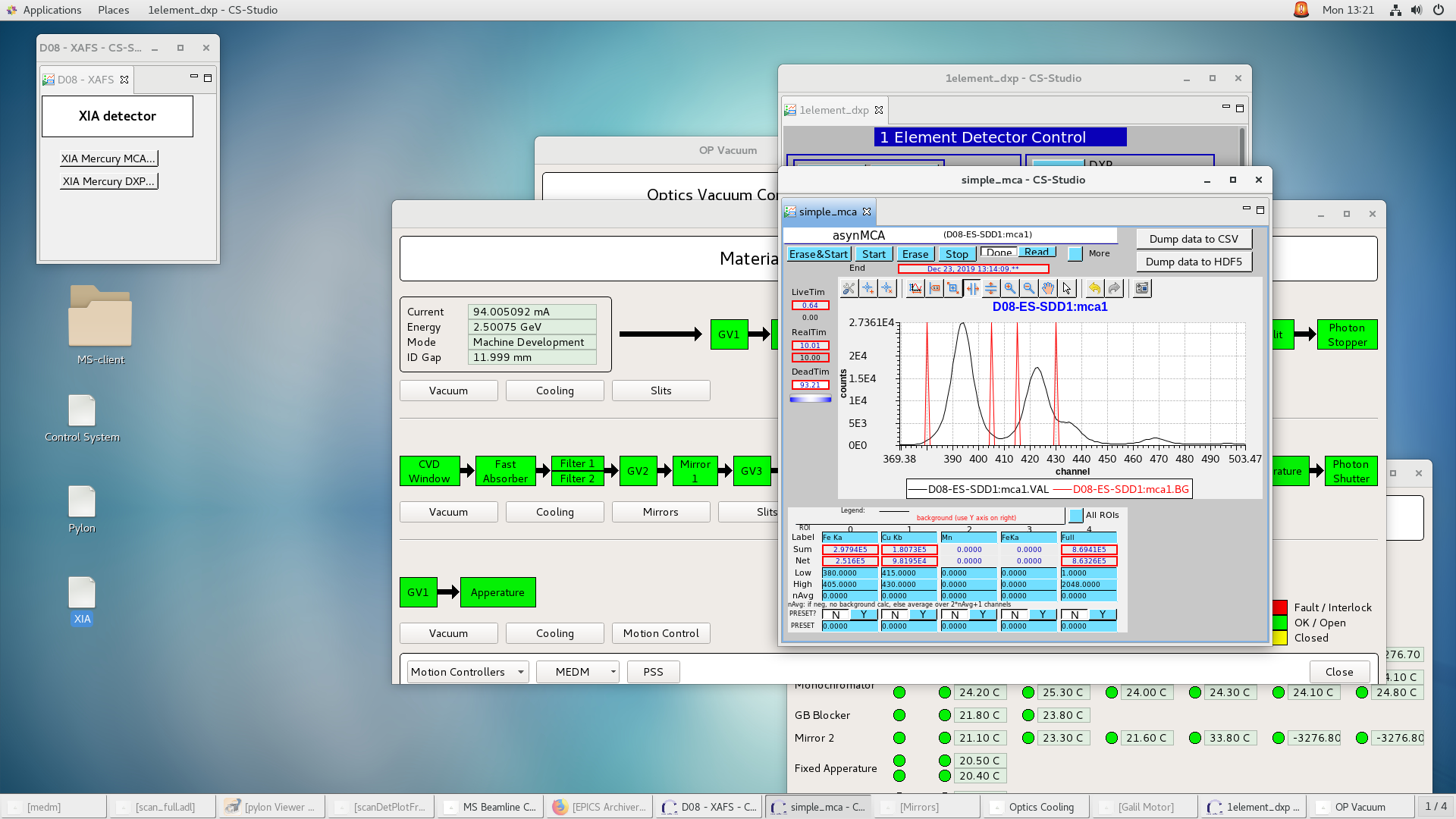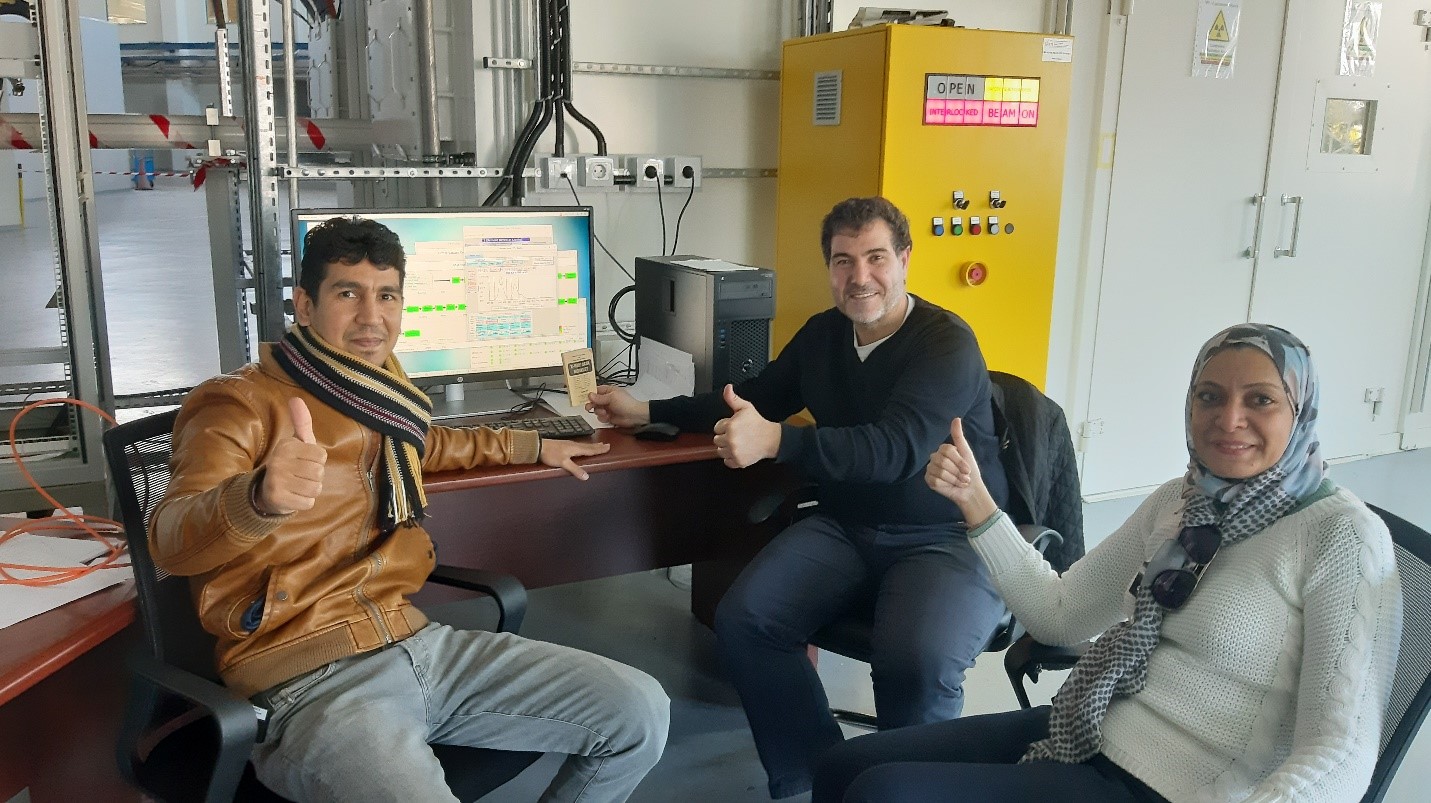On Monday, 23rd December 2019, at 13:21, scientists at the SESAME light source successfully delivered the first X-ray monochromatic beam to the experimental station of the Materials Science (MS) beamline, that will be used in applications of the X-ray powder diffraction (XRD) technique in materials science, The beamline will provide a powerful tool for studying microcrystalline or disordered/amorphous material on the atomic scale, the evolution of nano-scale structures and materials in various environmental conditions and for developing and characterising new smart materials.
To have seen the X-ray signal inside the MS experimental station was very exciting said the MS beamline scientist, Mahmoud Abdellatief. It was the realization of four years of hard work, and has given me added stimulus for the new challenges lying ahead before the beamline may host users in some six months.
The MS beamline is the first at SESAME to be equipped with an insertion device (wiggler), a gift from the Swiss Paul Scherrer Institute (PSI) and a device that enhances the brightness of the synchrotron light, thus reducing the time needed to make measurements, and making it possible to follow fast processes.
The major components of the beamline, also donated by PSI, were previously installed at the Swiss Light Source. Modifications were introduced in the beamline design so that these components match the characteristics of the SESAME storage ring. A powerful PILATUS 300K area detector, donated by DECTRIS (Switzerland), which is shortly to be installed, will provide the fast read-out time that is required to investigate the evolution of nano-scale structures and materials in extreme conditions of heating and cooling under gas flows.
SESAME’s MS beamline will accommodate XRD experiments in the energy range between 5 and 25 keV. It will provide a powerful tool for studies in many scientific fields among which the environment, energy storage materials, and cultural heritage.
A call for proposals for beam time on SESAME’s operational beamlines issued in November includes a call for proposals for beam time on the MS beamline.



